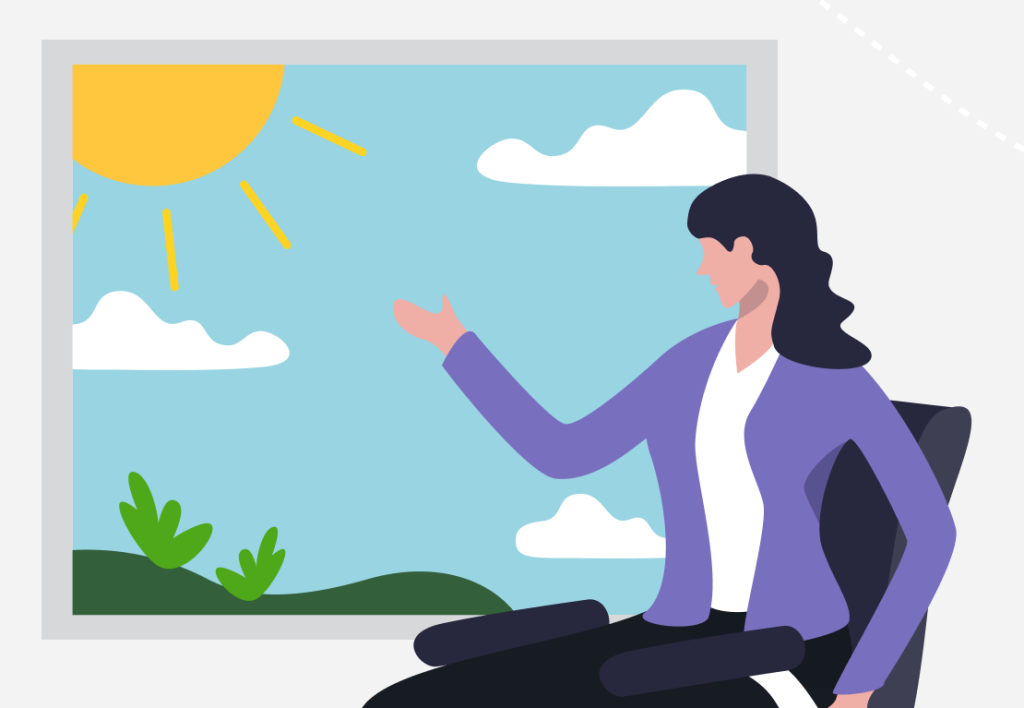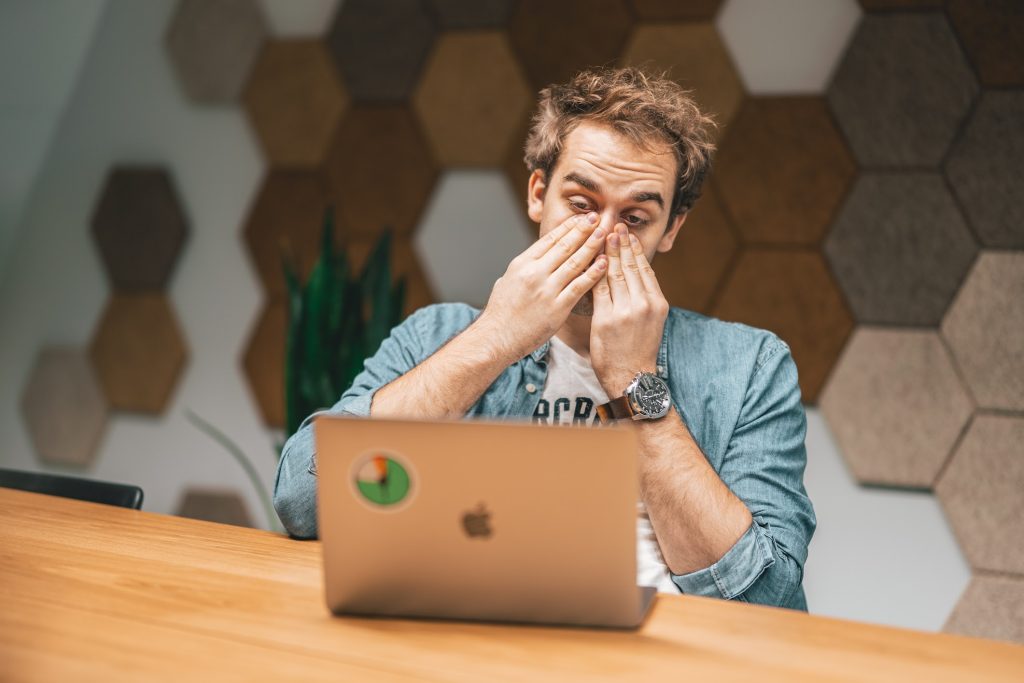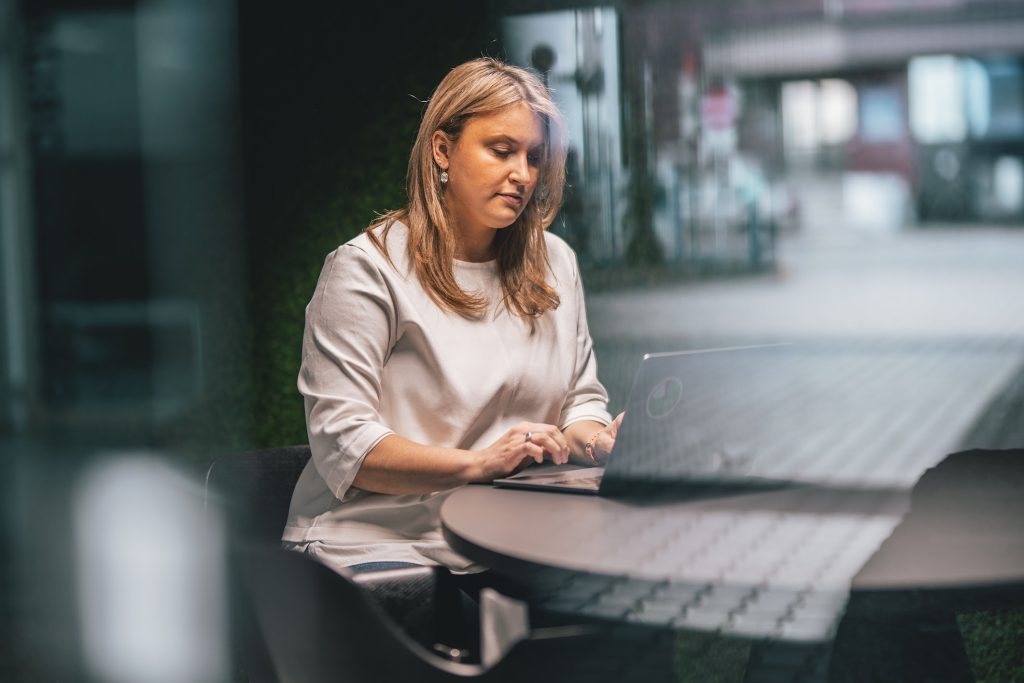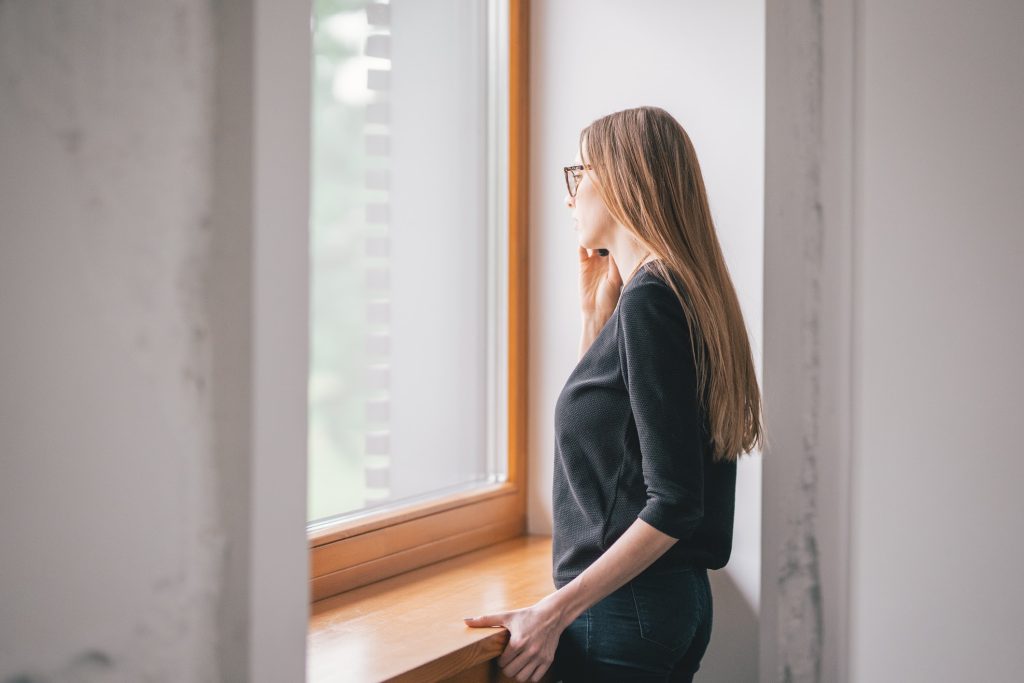How does light affect your circadian rhythm and productivity?

Light, be it natural or artificial, has the most significant impact on our circadian rhythm – the internal clock that regulates everything from when you feel sleepy to how your metabolism and immune system function, as well as numerous other triggers and processes within the body. And that includes your levels of alertness and creativity, which are vital for greater productivity.
How can you ensure that you have enough light exposure to keep your circadian rhythm steady? Why should we pay attention to the lighting in our workplaces? Keep reading, and you’ll find out!
Want to get the most out of your time?
Try DeskTime for free!
Try free for 14 days · No credit card required.
By signing up, you agree to our terms and privacy policy.

Circadian rhythm explained
But first, let’s start with the basics.
Have you ever disembarked from a long-haul flight only to fall victim to the dreaded jet lag? You feel sluggish but unable to sleep, almost slightly drunk in your actions, and your body won’t act how you want it to. That’s what a seriously out-of-sync circadian rhythm feels like.

Here’s how the interaction between light and circadian rhythm works.
When light hits our eyes and is transmitted to the brain, it activates the pineal gland – a part of your endocrine system that secretes melatonin, a hormone that makes us sleepy. This light-induced activation suppresses the release of melatonin. The less melatonin is released, the more alert and awake we feel.
At night, the pineal gland emits copious amounts of melatonin, which travels around our bodies, telling us that we are at the sleeping part of our circadian rhythm. The body then understands it’s time to shut down for the night.
Suppose we do not get adequate exposure to light during the day. In that case, our melatonin levels will remain high, and our bodies will be in a constant state of sleepiness, making us less alert and potentially unproductive.
Various factors affecting the circadian rhythm
- Screens and blue light
Blue light is now understood to be one of the biggest disruptors of our bodies’ melatonin production and, in turn, the circadian rhythm. The use of screens in almost every aspect of our lives makes it harder to maintain normal circadian rhythms. This is exacerbated further when people use their smartphones in bed just before falling asleep, leading to poor sleep quality.
- Irregular routines
Childcare, shift work, social lives, noisy environments, stress – all these things can create problems in maintaining a schedule that fits our natural bodily routine. Ask any night worker how hard it is to stay awake on their days off, and you will see how quickly irregular routines can take effect.
- Aging and other biological factors
As we age, our circadian rhythm shifts to an earlier schedule, meaning those over 60 have greater cognitive aptitude in the morning than later in the day. In contrast, teenagers’ rhythms run much later, so they are naturally sleepier in the morning and awake late into the night. Some health conditions, especially mental or hormonal issues, can also affect the circadian rhythm.
- Sleep
This is the ultimate chicken or egg situation. Poor sleep or sleep deprivation significantly affects the circadian rhythm, while a messed up circadian rhythm lowers sleep quality or causes insomnia. The bottom line here is that we must always pay attention to our sleep quality and conditions and stick to a regular sleep schedule.
The importance of lighting in workplaces

Light is a vital part of any interior. It has the power to change how we perceive space and create a particular atmosphere in any room. Workplaces – large corporate buildings or home offices – are no exception.
Since the advent of electric lighting, humans have been trying to get more productive time out of the day creating working hours that, quite literally, go against nature. Studies show that we are naturally more alert when the sun is up, with 75% of us most alert in mid to late morning.
The average workplace has an astonishing lack of natural light, so much so that ‘office life’ memes have become synonymous with flickering strip lighting and blinds blocking the outside world. A study by Staples found that having good lighting in a working environment is essential to 80% of employees.

Want your productivity to skyrocket?
Get the most out of DeskTime’s power features for time management.
Creativity is much more necessary for optimal productivity than many believe. Even though your day may not involve creating storyboards or ad campaigns, the need to manage tasks and problem-solve does require creativity to a certain degree. Light also plays a crucial role in providing creativity influx – creativity increases by 15% in offices with plenty of plants and natural light.
Physical comfort, especially the comfort of our eyes and lighting, also go hand in hand. A study by Cornell shows that offices lit by natural light displayed an 84% drop in eye strain, blurred vision, and associated headaches.
As you can see, lighting has everything to do with your productivity and creativity. But how can you improve indoor lighting for better productivity, and what are easy ways to boost your daily light exposure?
How to upgrade your light exposure at the workplace and keep your circadian rhythm steady

Before we get into tips and tricks, there’s an important note about artificial lighting versus natural light. The main issue about artificial light is that it’s just not as bright as sunlight. A walk in the park can expose you to light that is 100 times brighter than anything that can be replicated indoors. Thus, it’s no wonder that employees rank access to natural light and an outdoor view as their number one desire for an office environment.
This brings us to the first light exposure upgrade tip – choosing to sit by a window if possible. A window seat allows you to get as much exposure to daylight during the working day as possible, making us more alert and potentially productive. You can also try opening that window – fresh air works wonders for our efficiency.
Note: Not all of us can have that desired window seat. If that’s your case, try walking over to a window and taking a look outside regularly. That will not only bring your body some natural light but also help to avoid eye strain.
Secondly, consider getting a double hit of daylight and fresh air by walking on your lunch break. Research has shown that a 29-minute walk results in a 45% increase in productivity during the remaining workday. This is especially pertinent when working from home, as it can help separate personal and professional life in your mind, helping you step away from work.

Thirdly, consider adding mirrors to your working environment. They help light from the windows bounce around the room, making it seem brighter. The mirror hack is beneficial when adding more light to a relatively dark space.
Moreover, having a consistent routine can help nudge your body into regularity – repeated bedtimes and waking times are crucial for maintaining a steady circadian rhythm, which adds to our daily productivity. This is especially true for hybrid work schedules when it can be easy to get overwhelmed and sidestep healthy habits.
In extreme cases, or if your work prevents you from accessing enough daylight, you can try light therapy. During this treatment, the individual is exposed to an imitation of natural sunlight. Light therapy is often used to treat various forms of depression, including seasonal depression and the so-called winter blues caused by lack of sunlight and cold weather.
Bonus: Wellness architecture in our offices
Wellness architecture is growing in popularity and is taking center stage in the world of office design. Office and public buildings are being designed considering their impact on our health, and windows play a crucial part as the natural light “bearers”. Research into how glass can be improved to strengthen our connection to the outside world is growing every year, with many innovations being developed.
Plus, as the core ingredient in providing access to essential natural light, the glass is improving. As building regulations move towards sustainability and carbon neutrality, so does glass. Now there is glass that can not only keep the heat in or out but even filter out harmful UV rays while optimizing the health-giving benefits of daylight.

Employers also recognize that potential employees actively seek workplaces promoting health and well-being. Thus, an office with large windows and access to fresh air could help with talent retention. In a study into workplace environments, 70% of the respondents said that a health-promoting office was a reason for staying at their current job.
Combining the request for wellness-focused workplaces in the present with the technology of the future may mean that offices and work environments will become healthier for all of us.
Final thoughts
Access to daylight plays a crucial role in our well-being. From a healthy circadian rhythm to boosted productivity – light creates wonders. Employees, employers, architects, and facility managers all need to be aware of the impact our interior environments have on how well we function. And maximizing the amount of sunlight and fresh air should be high on everyone’s agenda.
This is a guest post written by Charlene Whitlock on behalf of Cantifix, one of the leading architectural glazing specialists in the UK. As well as creating innovative glass products, they also collaborate on research into the impact of natural light on people’s health and well-being, including a project with Oxford University into the effect of living in the all-glass living environment, the ‘Photon Space’.
Did you find this article useful? Give it a clap!
Psst! You can clap more than once if you really loved it 🙂